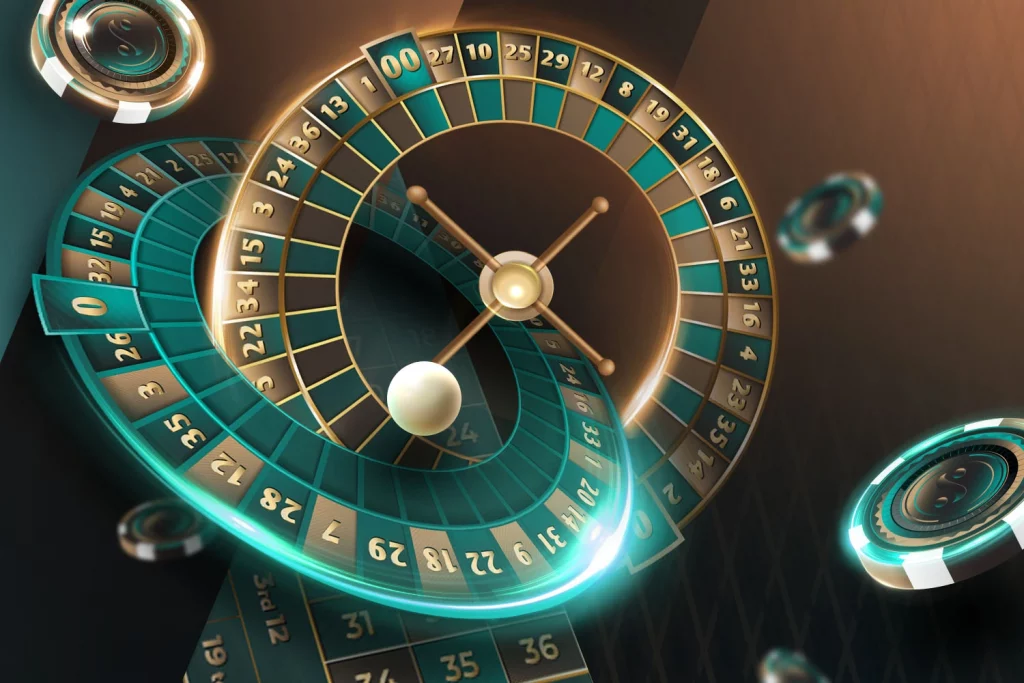When people go to casinos, they almost always play blackjack or slots. Roulette and even poker are other popular choices. Comparatively, baccarat is a card game that is not particularly popular, partly because the majority of customers in the casino are not familiar with the basic principles of this table game. The name Baccarat summons up images of James Bond and wealthy high rollers in the VIP rooms of exclusive casinos.
Baccarat is a game that is potentially very rewarding, in addition to having a pleasant gameplay experience. As a result of its low house edge, players have a more significant chance of winning or coming out even when compared to most other casino table games.
Furthermore, the rules of this game are quite easy to master. In this article, we will explain the rules of Punto Banco baccarat and walk you through how to play the game. We will also provide tips for developing more effective betting strategies. Let’s start this baccarat journey with a little history.
Getting started with baccarat
There are several variations of baccarat, but the game’s basic rules are the same. However, the most popular variant found at online casinos is Punto Banco and we will look at the rules for this variant in detail.
In Punto Banco baccarat, there are only two hands at play: the player (punto) and the bank (banco). This doesn’t mean that one person is the bank and the other is the player; it’s the name for one side and the other.
The objective in baccarat is the same, regardless of the variant you are playing. Essentially, that aim is to score as close to nine as possible with your cards without going over.
At the end of each game, you have three possible outcomes:
- The player has the higher score.
- The bank has the higher score.
- There is a “tie”.
You can wager that the player hand will win or the banker hand will win or the outcome will be a tie.
Hand valuations
The value of the individual cards is as follows:
- Cards 2 through 9 are worth their face value.
- 10, Jack, Queen and King are worth 10.
- Aces are worth 1.
- The highest possible hand value is 9.
You calculate the total hand value by checking the “units” digit of the sum of constituent cards. Here are some examples:
- A hand with a 4 and an 8 totals 12, so the hand value is 2.
- If a hand has a Queen and an Ace totals 11, giving a hand value of 1.
- A hand with two 7’s totals 14, making the hand value 4.
Baccarat Rules
Baccarat is a game comparing the cards held by the player and the banker. Each round of play is called a coup, and the basic rules are as follows:
- Before any cards are dealt, bets must be placed.
- Players wager on the player’s hand to win, the banker hand to win or they place a tie bet.
- Once all bets have been placed, the player hand is dealt a card face up.
- Now no further bets can be placed.
- Next, the banker hand is dealt a card face up
- The player hand is dealt a second card face up
- Finally, the banker hand is dealt a second card face up
- The points total of each hand is calculated.
- If the total of either hand is 8 or 9, this is declared a “natural win” and the coup ends.
- Depending on the variant being played and the house rules in operation, either the banker’s hand or the player’s hand may request a third card.
- However, no more than three cards can be dealt to any one hand at any given time.
- The final points total of each hand is now calculated.
- The hand with the points total closest to 9 wins.
- If the total ends up being the same for the player and the bank, it’s a tie.
- All bets are now settled and the next coup can begin.
Third card rules
In Punto Banco baccarat participants draw a third card according to the “third card rules”. Since these regulations are a necessary part of the game, they are automatically applied. Therefore, players do not have to learn them. However, it is still wise to know and understand these rules.
Player’s hand rules
- When the hand value of the player totals 0 to 5, a 3rd card is drawn.
- If a player hand value is 6 or 7, the player stands and does not take a third card.
Banker’s hand rules
After deciding whether the player’s hand should receive a 3rd card or not, the banker’s hand can draw a 3rd card in accordance with the following rules:
- If the player stands without drawing a 3rd card, then the banker’s hand follows the same rules as the player’s hand.
- This means that the banker takes a 3rd card if their hand is valued at 5 or less, but stands if the hand is worth 6 or 7.
- However, if the player’s hand has drawn a 3rd card, then the banker’s hand must obey the following set of rules.
- If the total value of the banker’s hand is between 0 and 2, the banker draws a 3rd card.
- When the banker’s hand value is between 3 and 6, a third card is drawn or the hand stands, depending on the value of the player’s third card according to these rules:
-
-
- If the banker’s hand totals 3, a 3rd card is drawn, unless the player’s 3rd card was an 8.
- Should the banker hand total to 4, a 3rd card is drawn if the player’s 3rd card was any number from 2 to 7 inclusive.
- If the banker’s hand totals 5, a 3rd card is drawn if the player’s 3rd card was 4, 5, 6, or 7.
- If the banker’s hand totals 6, a 3rd card is only drawn if the player’s 3rd card was a 6 or 7
-
- However, if the banker’s hand is valued at 7, the banker stands.
- As mentioned above, if the banker has a hand value of 8 or 9, both hands stand.
As mentioned before, there’s no need to know these rules in order to play since they go into effect automatically as needed.
Baccarat Strategies
There is a lot that you can gain and learn from actual play, like many other casino games. However, some plays and strategies are best grasped at the earliest. So, to help you formulate a plan of action, here are some baccarat strategies.
Ignore the “Tie” option
Experts estimate the house edge on a tie to be 14.4 %. That means you might potentially lose $14.36 if you placed a hundred $1 bets. Having to risk such a large percentage right off the bat is bad news and should make you think twice about making this bet.
Bets on the banker’s hand (which pay 1:1) have a much lower house edge of 1.06%. Therefore, if you stake $100 on the banker’s hand, you will lose roughly $1 on average.
Bet on the Bank
Since the bank’s hand wins slightly more than half of the time, this should be your default bet. As there is a 5% commission on the player’s gains, it is merely another proof of this.
Not only is it the easiest, but it is also the safest way to play baccarat by betting on the banker’s hand. It all comes down to pure maths.
As we mentioned previously, the potential house edge for betting on the banker’s hand is 1.06%. Bets placed on the banker’s hand have a whopping return to player rate (RTP) of 98.94%. If you placed 100 $1 wagers on the banker’s hand, you would expect to win them 98.94 times out of that 100. However, keep in mind that this metric is theoretical and can only indicate to you whether one wager is more suitable or worse than another. So you should try the following strategies:
Stay with the bank — until it loses
You should keep an eye out for consecutive wins, and the bank should normally benefit the most from them. This is a time to side with the bank but do so cautiously.
Taking into account the 5% fee, even if you ignore the tie bets, the house edge for the banker’s hand is still a very respectable 1.17%. This means that a player may theoretically lose $1.17 for every $100 wagered on the banker and $1.36 for every $100 wagered on the player’s hand.
The idea of this strategy is that you should always bet on the bank until the bank loses a hand.
Pass the bet on the bank when it loses
Now, if the bank has just lost, this strategy tells you to hold off wagering on the next result since the bank is losing and the player is winning. This means that you do not place any wager at all on the next coup. If that one is also a bank loss, continue to hold off wagering until the next bank win comes around.
It is important to remember who came out on top in each coup – the player hand or the bank hand. After that play is over, you can restart betting based on the new information.
Discount all ties
For the sake of this strategy, you should disregard any coup that ends in a draw. Never count a tie wager as being against either the player’s or the bank’s win/loss tally because there is no winner or loser in a drawn game.
Manage your stake
Even though baccarat has a favourable house edge, the odds of winning or losing are almost even. We recommend that you try to ride the winning streaks, but you should always keep an eye on your spending.
It is smart to set a budget and decide what size your unit stake will be. The unit stake will be influenced by the table limits of the baccarat game you are playing. For example, it is no point setting your unit stake at $1 if the table minimum bet is $5.
Stick to a timetable that caps your losses at a set number of stake units per session. This should be followed by a full rest. It is also sensible to set a maximum bet limit per wager. A common limit is to never stake more than 10 units per bet. However, again, this will be influenced by the maximum bet limits of the baccarat table you are playing at.
The Martingale System
Baccarat is a game that lends itself well to the Martingale System, a method of betting that gained popularity in the 18th century in France and involves progressively increasing the wager after each loss.
The Martingale System is based on the principle of Mean Reversion, which states that past returns and asset values will eventually revert to the long-term mean.
If you gamble $10 on the Bank and lose, you should immediately wager $20 on the same hand. But that’s not the end of it.
According to this principle, you should keep playing until you achieve success. If you lose a $20 wager, you should increase your next wager to $40 (a fourfold increase).
After a successful wager, the bettor returns to the original wager value and continues playing. If your $40 Banker bet succeeds, you should return to betting $10.
The primary premise of the Martingale betting strategy is that the player will eventually win the cycle’s largest wager. However, this strategy does require careful monitoring of your bankroll.
The Fibonacci Strategy
This is a betting practice in which the amount to wager following a loss is determined by the Fibonacci sequence of numbers. Here, you get the next number in the sequence by calculating the sum of the preceding two integers.
Numbers 1, 2, 3, 5, 8, 13, etc., are all part of the Fibonacci sequence.
In contrast to the Martingale system, this technique requires a significant amount of mathematical calculation. However, you need not be a maths genius to put this method into effect.
The basic strategy is to raise your wager after each loss. The cycle continues until you land a win, otherwise, the sequence continues. The Fibonacci system, like the Martingale system, takes the principle of mean revision at face value. The theory holds the idea that if you keep increasing your wager after each loss, you will eventually recover your previous losses and make a profit.
Baccarat Variants
Punto Banco
As mentioned, “punto banco” is the most common baccarat variant available at online casinos. You can play with four, six, or eight decks of cards, all of which are shuffled together.
This variant is commonly found as a virtual game, where the outcome is determined by random number generator (RNG) software. Punto Banco is also a popular variant in live dealer games.
Chemin de Fer
This variant is found in brick-and-mortar casinos. It is played with 6 decks of cards and several players, one of whom is designated the banker. The banker position passes counterclockwise around the table as the game progresses.
Baccarat Banque
This is another variant only found in brick-and-mortar casinos. Up to 11 players can take part, with one designated banker and having 5 players seated on either side.
Responsible Gambling
Ultimately, whichever variant of the game you decide on, it is also essential to practice responsible gambling. Be sure to only play within your means and take advantage of the responsible gambling tools, such as deposit, wager and loss limits, cooling-off, and self-exclusion periods as needed.













